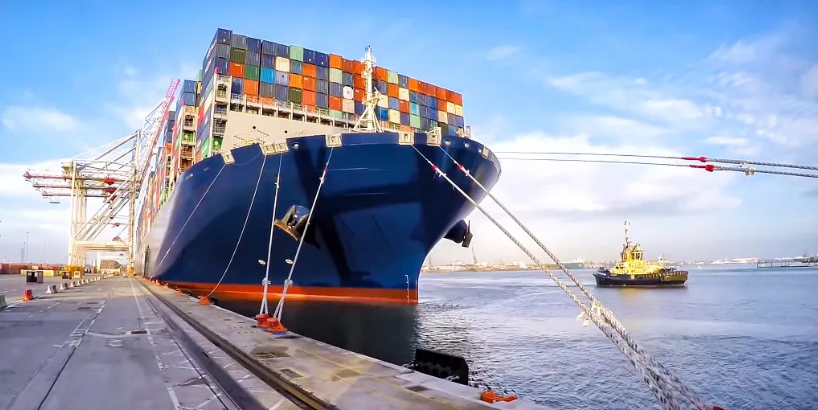China and the United States shipping prices fell, the subsequent trend of freight prices is still uncertain

Recently, the continuous rise in shipping prices seems to have a cooling trend. Before October this year, shipping prices showed a slight decline. According to the data released by Shanghai Shipping Exchange on September 30, China Export Container Freight Index (CCFI) was 3220.55 points, down 0.5% compared with the previous period; Shanghai Export Container Freight Index (SCFI) was 4614 points, down 0.6% compared with the previous period.
The rise is particularly prominent in the United States and China shipping prices have also fallen continuously in recent months. According to FBX data, on September 10, China/East Asia to North America West Coast sea freight price of $ 20586 / FEU (40 feet container), October 8 has fallen to $ 16004 / FEU; China/East Asia to North America East Coast sea freight price also fell from September 10 of $ 22173 / FEU to October 8, $ 19421 / FEU. October 10, "Securities Daily" reporter interviewed a number of sea freight forwarders have confirmed that the recent Sino-US shipping prices have indeed fallen.
This undoubtedly makes the export of the United States of China's toilet manufacturer "breathe a sigh of relief", after all, the freight rate has been compared with the value of the toilets. CITIC Securities Chief IFCC analyst in an interview with the "Securities Daily" reporter that the easing of shipping prices to a certain extent to reduce the pressure on China's best toilet manufacturer, especially small and micro foreign trade toilet bowl manufacturers. Since this year, the high upstream raw material prices and shipping prices have been two big mountains on the foreign trade commercial toilet manufacturers. Under the influence of power pulling, tightening capacity means less export goods. At this point in time shipping prices tend to rational, short-term easing the pressure on foreign trade largest toilet manufacturer.

China-US shipping prices continue to fall
Since this year, ocean freight prices have continued to rise, especially on the China-US route, which is "soaring". The highest price of the year was US$20,586 on September 10, up 387.59% from the beginning of the year; the ocean freight price from China/East Asia to North America's East Coast was US$5,394/FEU on January 1, US$10,393/FEU on June 4, US$20,636/FEU on August 6, and the highest price of the year was US$22,036/FEU on September 10. The highest price of the year was US$22,173/FEU, up 311.07% from the beginning of the year.
However, recently, the sea freight price of China-US route started to fall, FBX data shows that the sea freight price from China/East Asia to North America West Coast started to fall after surging to US$20,586/FEU on September 10, and has fallen to US$16,004/FEU on October 8. less than one month, a drop of 22.26%. Ocean freight prices from China/East Asia to North America East Coast also peaked at US$22,173/FEU on September 10, and then entered a downward path to US$19,421/FEU on October 8, down by 12.41%.
According to the data released by Shanghai Shipping Exchange on October 8, the China Export Container Freight Index (CCFI) was 3271.7 points, up 1.6% from 3220.55 points in the previous period. The U.S. West route is 2135.83 points, down 3.7% from the previous period's 2217.28 points; the U.S. East route is 2687.91 points, up 7% from the previous period's 2512.38 points.
IPG China's chief economist in an interview with the "Securities Daily" reporter said that the recent decline in sea freight prices in the U.S. route on the one hand is the domestic power restrictions and production restrictions caused by the decline in shipments triggered by the reduction in demand for containers; on the other hand is also the global container transfer and supply rebalancing after the gap is reduced.
Recent shipping prices on the China-US route entered the downward channel, mainly due to the re-adjustment of supply and demand." China International Economic Exchange Center, deputy director of the Department of Economic Research, Mr. Liu told the Securities Daily reporter that the high price of shipping triggered an increase in new shipping capacity, the gradual release of new box production capacity, the empty box turnover accelerated, the shortage of shipping empty boxes has been significantly improved, so the previous "hard to find a box" situation has improved, continued The "high fever" shipping costs also naturally fall back with the demand drop.
We have analyzed both domestic and international factors. Domestic factors, electricity and production restrictions or a reason for the decline in shipping prices. Recently, the proportion of exports of coastal provinces have been introduced to limit electricity policy, for the relevant export enterprises, in the case of electricity restrictions, production capacity is bound to be affected, shipments or reduced, so the demand for shipping is also moderated. In addition, the National Day holiday is also a seasonal factor in the fall in shipping prices.

The subsequent trend of freight rates is still unclear
A person related to the shipping company said to the "Securities Daily" reporter, from the recent price situation, the price of the European line is relatively stable, the U.S. line LA (Los Angeles) and NY (New York) prices do have signs of falling back.
This point also has a direct reflection in the data. According to international shipping research and consulting agency Drewry (Drewry) data show that on September 30, Shanghai to Los Angeles sea freight price of 12,172 U.S. dollars / FEU, October 7 is 11,173 U.S. dollars / FEU, down 8.2%; Shanghai to New York sea freight price on September 30 for 15,849 U.S. dollars / FEU, October 7 for 15,110 U.S. dollars / FEU, down 4.2%. FEU on September 30 and US$15,110/FEU on October 7, down by 4.7%.
October China holiday period price retreat mainly lies in the holiday factor. Many companies have arranged shipments before the holidays, and no shipments were made during the holidays, so the recent sea freight prices on the China-US route have fallen back. At the same time, the recent deadline also caused a reduction in shipments, the corresponding transport demand is also reduced, resulting in a decline in prices." Qingdao, an international freight forwarding company staff said to reporters.
Mr. Liu believes that the lower shipping prices in the U.S.-China route will effectively reduce the export costs of China's foreign trade enterprises, which can help them expand overseas markets and improve market share, better fulfill the new orders and boost export trade. At the same time, it is also conducive to the development of small and micro foreign trade enterprises cross-border e-commerce, overseas warehouses and other foreign trade new business, enhance the small and micro enterprises to obtain the momentum of development, thereby maintaining the stability of the industrial chain supply chain, to ensure the smooth operation of the global trade and investment cycle, and enhance the resilience of China's economic development.
For the trend of late sea freight prices, experts also have different views. Some people believe that the late China-US shipping price trend is expected to achieve a steady decline in short-term and long-term disturbing factors mainly include the increase or decrease in two-way freight volume, trade variety differences and structural changes to the container demand changes, changes in the epidemic on the progress of port operations and the impact of ocean shipping capacity.
"Price reduction or only short-term impact, the current price trend is difficult to say the inflection point, the follow-up is expected to maritime prices or still running at a high level." Experts said, from the fundamental point of view, with the approach of overseas Christmas holidays and Europe and the United States and other developed countries and regions continue to repair the economy, overseas demand side is still resilient, and the current overseas supply chain and terminal efficiency has not yet recovered, the future of sea freight prices remain to be seen. Among them, short-term impact factors include the strength and continuation of the implementation of the domestic power restriction policy and the global energy crisis, the former mainly affects the capacity of domestic exporters, the latter affects the global supply capacity; in the long term, if the global epidemic is still fermenting, then the high freight prices may remain for some time.

